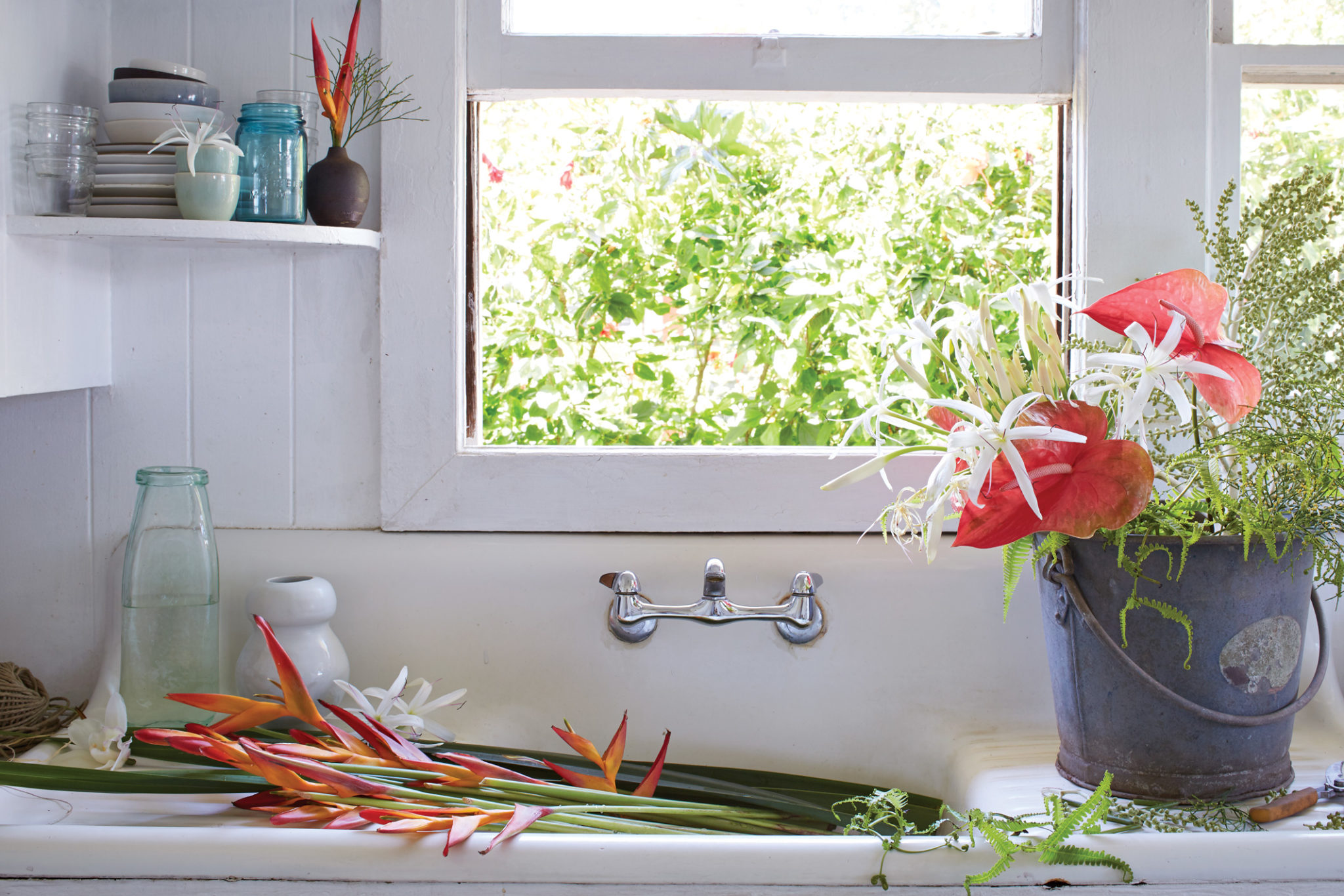The founder of botanical boutique Paiko, Tamara Rigney, shares tips on harvesting and displaying local flora.
In Hawaiʻi, there is a thin line between inside and out. Rain blows through our windows year-round. Trade winds bring the distinctly Hawaiian fragrance of tropical flowers into our bedrooms at night. Geckos live with us—whether we like it or not. And though we remove our shoes at the front door, sand always finds its way in.
Here, in the islands, we spend as much time as we can outside, and when it is time to go indoors, we bring elements of nature with us, into our homes. We make floral arrangements to remind us that the sea, the forests, the mountains, are right outside, where we left them.

The book I created with photographer Mariko Reed, ʻOhi: How to Gather and Arrange Hawaii’s Flora, celebrates the resourcefulness that can stem from island living. In compiling it, we walked roadsides and visited friends’ backyards.
We stumbled upon the last few mountain apple blossoms, weeks after we thought the season had ended. We stood on our truck in a parking lot to harvest tulipwood flowers. We jogged home with a giant branch of seagrape we found on an evening run.
Sometimes there were silver linings: A local farmer offered us a rare chance to get our hands on some banksia branches after a windstorm took out her tree. And sometimes we were determined: We beat early morning farmer’s market crowds to score bunches of dancing lady ginger.
From aloe plants flowering beneath freeways to laua‘e ferns growing out of sidewalk cracks and gutters, there is never a shortage of natural materials here. And because almost every plant you see in Hawai‘i is beautiful, you don’t need to be an expert to make beautiful arrangements. It’s actually pretty simple: Get outside. Pull inspiration from your surroundings. Keep your clippers handy.
The moment you discover a new plant, you will begin to notice it everywhere, giving you a fresh perspective on the natural beauty of the island you call home. Below are five tips from ʻOhi to guide you in creating arrangements of your own.
Harvesting

Certain plants hold up better than others when cut. Thick, shiny leaves, like those of the monstera plant, and heavy, waxy flowers, like heliconia, are signs that a plant will last. Avoid soft juvenile growth, which is prone to wilting. Most plants, especially delicate ones like ferns, should go directly into water after harvesting.
Hydrating

Before arranging, trim your stems at a sharp angle and immediately place them in a clean bucket of lukewarm water. Even better, trim them while they are submerged in water, which prevents air from disrupting water flow, and is especially beneficial for soft-stemmed plants like ginger, uluhe ferns, and orchids.
Selecting a Palette

A good flower pairing is simply one that pleases your eye. Hold different materials together to explore color and texture combinations. With bold tropicals, you often only need one or two plants.
Vases

Aim for an arrangement about one to two times the height of your vase. Almost anything that holds water can make a vase. Borrow a glass from your kitchen, or reuse that pretty sake bottle you’ve been holding on to.
Tying Bunches

Tying stems in a bunch is a good strategy for arranging awkwardly shaped plant materials. This technique also allows you to use anything from a bowl to a water glass as a vase. Starting with the largest bloom, compose the bouquet in one hand, adding stems with the other. Long leaves, such as tī or whaleback, may be folded to create volume. Secure with several wraps of twine and a simple knot.
These tips and the abridged introduction were excerpted from ‘Ohi: How to Gather and Arrange Hawaii’s Flora, which is available at select boutiques and online at paikohawaii.com.

